Last Updated on November 26, 2023 by Cathy
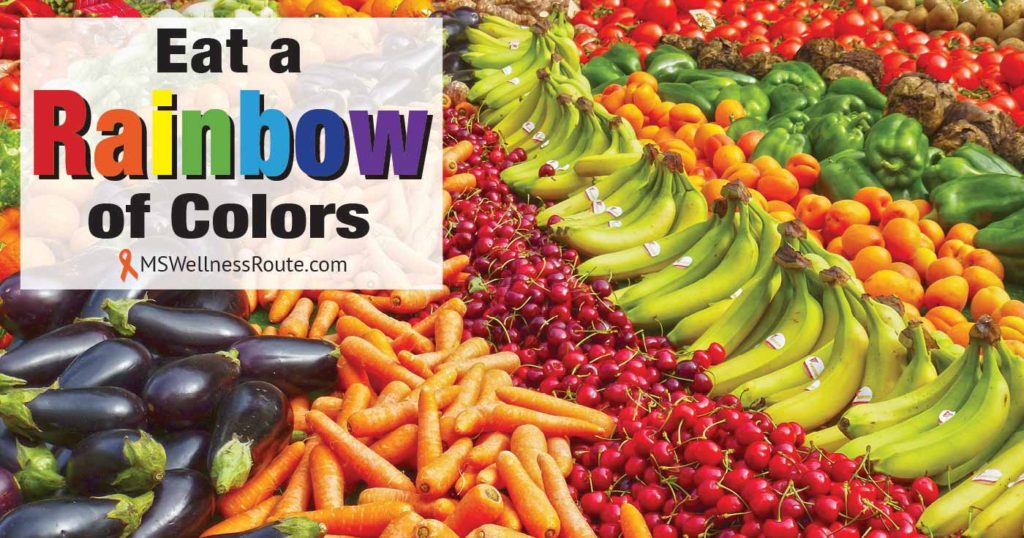
By now you should know the benefits of eating lots of vegetables and fruit for your health. Especially for people with multiple sclerosis (MS). There are more health benefits when you eat a rainbow of colors. Unfortunately, many people get stuck in a rut and they eat the same foods over and over. While this does keep it simple. However, you end up missing many nutrients your body desperately needs.
Instead, you should aim for a wide range of 9-13 cups of vegetables and fruit each day. To make it easy, think of the rainbow. Eating a rainbow of produce every day will supply you with all the nutrients you need. Including vitamins, minerals, antioxidants, and phytonutrients.
What are phytonutrients?
Phytonutrients or phytochemicals are natural compounds produced by plants. It helps the plants resist bacteria, fungi, and plant infections. It also keeps insects or animals from eating them. Phytonutrients also protect humans, they have anti-inflammatory and antioxidant compounds.
Blueberries provide antioxidants, improve brain function, and lower type 2 diabetes risk. Blueberries also protect you from DNA damage caused by free radicals. Studies show that people who eat more vegetables and fruit have a lower risk of chronic diseases. Such as autoimmune diseases, cancer, diabetes, and heart disease.
Phytonutrients activate enzymes that help:
- Boost the immune system
- Improve heart health
- Kill cancer cells
- Rids the body of toxins
Vegetables and fruit are the best sources of phytonutrients. You can also get phytonutrients from herbs and spices, nuts, seeds, and herbal teas. As you are aiming for your 9-13 cups of vegetables each day think of the rainbow.
Vegetables and fruit colored all the way through are higher in phytonutrients. Such as avocados, blueberries, beets, carrots, and oranges. Produce that is white inside does contribute to your health but aim for the dark-colored produced.
Supplements
There are phytonutrient supplements but many studies warn consumers to avoid that option. Eating a wide range of produce provides many benefits that supplements can not duplicate.
Start with Color
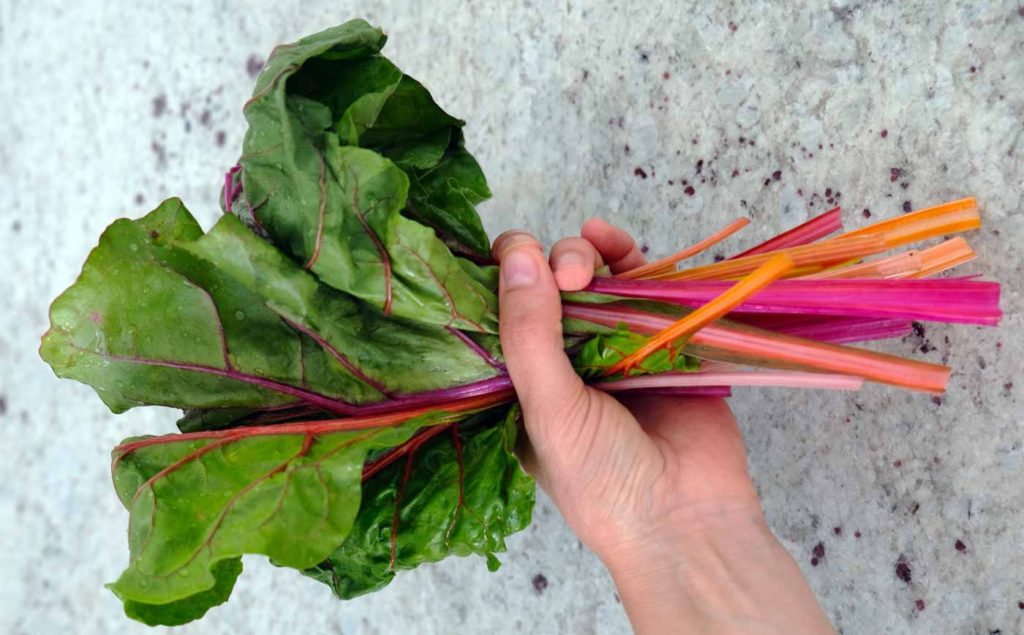
Aiming for 9-13 cups of vegetables each day can feel a little daunting. If you start by adding color it makes it a little easier. Instead of buying white cauliflower buy purple, the taste isn’t that different.
Starchy vegetables such as beets, parsnips, and sweet potatoes are rich in phytonutrients. But, they cause your blood sugar to rise more rapidly than non-starchy vegetables.
You can use starchy vegetables to thicken soups and stews. Puree the starchy vegetables after they’re cooked and stir it into the soup or stew. Starchy vegetables are tasty when you drizzle them with olive oil and add a dash of garlic or other herbs. Beets (peeled), sweet potatoes, and yams are delicious when they’re baked.
It is best to only eat starchy vegetables occasionally to keep your blood sugar in balance. Especially if you have diabetes or adrenal fatigue. Plus, parasites, bacterial, or yeast overgrowth feed on sugar to grow. – They don’t care where the sugar comes from.
Ideas to eat more vegetables:
- Lettuce wraps instead of tortilla shells or buns
- Prep your vegetables ahead so they are easily accessible and ready to eat
- Salads – use a variety of greens and colors topped with proteins and healthy fats
- Smoothies
- Soups
Fruit
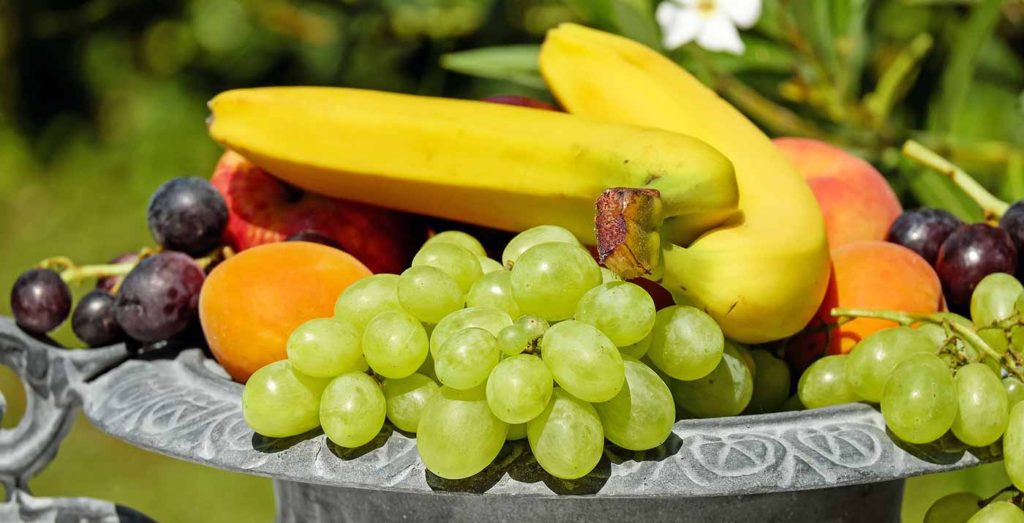
Fresh fruit, especially when it’s in season is an easy and delicious way to eat a rainbow of colors. Like vegetables, they include antioxidants, vitamins, minerals, fiber, and phytonutrients. Although most fruit is higher in water content than vegetables they are also higher in sugar.
Like starchy vegetables, fruit raises your blood sugar rapidly. You should only eat them in moderation. It’s best to eat a small amount (about palm-size) each day to keep your blood sugar from shooting up. It’s best to eat fruit with some kind of fat like nuts to help stabilize your blood sugar.
Some fruits are naturally lower in sugar than others but it doesn’t mean you can eat more of them in one day.
Fruits lower in natural sugar:
- Avocados
- Berries (blackberries, blueberries, cranberries, raspberries, strawberries, wild huckleberries)
- Grapefruit
- Green apples
- Lemons
- Limes
- Olives raw or without preservatives
Unfortunately, fruit oftentimes has mold on it. If you do see any mold discard it, especially if you have high levels of mycotoxins in your body.
Fiber
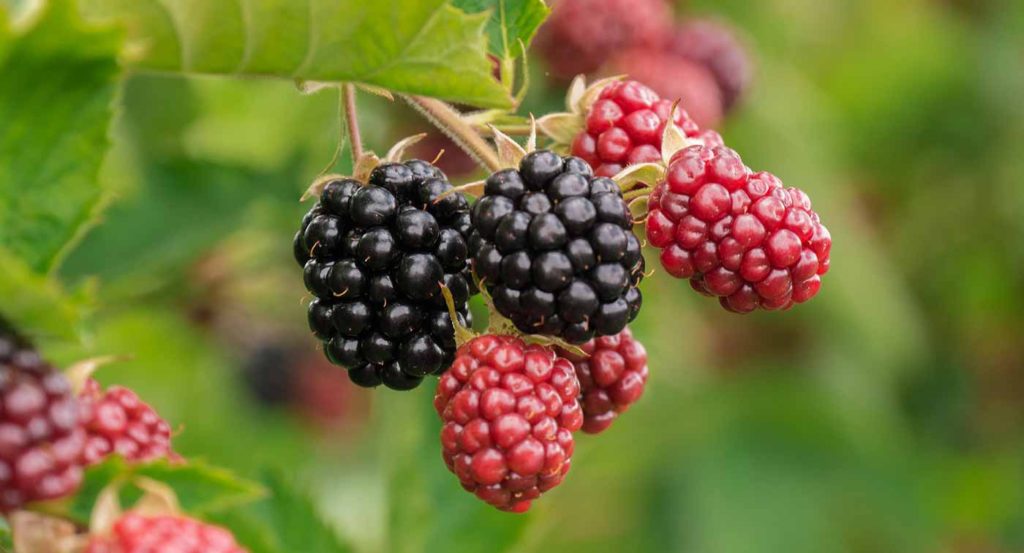
Eating vegetables and fruits is a great source of fiber. Fiber is a type of carbohydrate that your body doesn’t digest so it leaves you feeling fuller longer. There are two different types of fiber, insoluble and soluble.
Insoluble fiber helps the intestines to move food along. Soluble fiber absorbs water creating a gel-like mass to slow digestion down. It also grabs toxins and other substances such as dietary fats so you can excrete them.
Most people don’t eat enough fiber. You should aim for at least 5 grams of fiber per serving depending on your size. Check out Foods That Are Highest In Fiber to learn more.
Eat a Rainbow of Produce
There are seven colors to the rainbow – red, orange, yellow, green, blue, indigo, and violet. Try to incorporate these colors of produce into your diet every day.
Red – helps protect the brain, heart, immune system, and liver, and lowers the risk of some cancers. Red foods include beets, cranberries, grapefruit, rhubarb, and watermelon.
Orange – protects the eyes, immune system, and skin, and reduces the risk for cancer and heart disease. Orange foods include apricots, cantaloupe, carrots, mango, pumpkin, and yams.
Yellow – protects the brain, heart, eyes, and skin. They are anti-cancer and anti-inflammatory. Yellow foods include bell peppers, lemons, pineapple, summer and winter squash.
Green – protects the brain, heart, liver, and skin. They are anti-cancer and anti-inflammatory. Plus, they help the liver work better and assist with keeping hormones in balance. Green foods include artichokes, avocados, bok choy, broccoli, and greens.
Blue/purple/black – protects the brain by promoting healthy cognition and the heart. They are anti-cancer and anti-inflammatory. Foods that are blue/purple/black include berries, cabbage, carrots, cauliflower, and figs.
White/tan/brown may not be on the rainbow but they are also beneficial. They help protect the heart and they are anti-cancer and anti-inflammatory. Plus, they assist with liver and hormone health. Foods that are white/tan/brown include apples, cauliflower, dates, garlic, and jicama.
Eat Organic Vegetables and Fruit
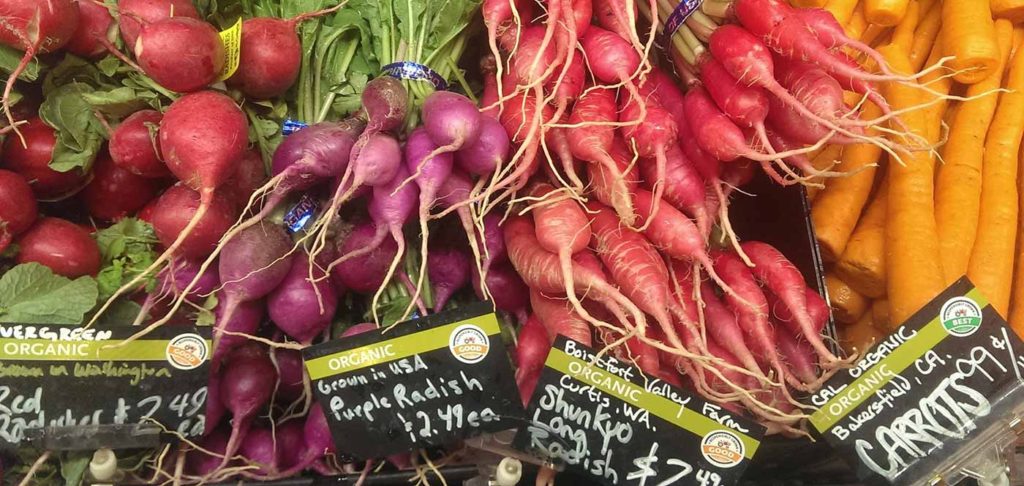
Eating organic produce lowers your exposure to pesticides and genetically modified organisms (GMO). Pesticides increase your exposure to carcinogens. Some produce has higher levels of pesticide residues than others. If you can’t always afford it buy organic if it shows up on EWG’s Dirty Dozen list.
Dirty Dozen with the most pesticides:
- Strawberries
- Spinach
- Kale
- Nectarines
- Apples
- Grapes
- Peaches
- Cherries
- Pears
- Tomatoes (nightshade)
- Celery
- Potatoes (avoid)
Eat a Rainbow of Colors
By paying attention to the colors you eat you will get more variety instead of eating the same thing. If you have a smoothie for breakfast you can get most of these colors first thing in the morning. Make it a goal to get all colors of the rainbow every day with a variety of different foods.
Make it fun!
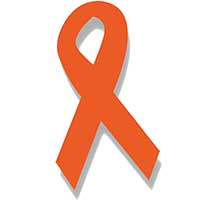
Free Wellness Library!
Subscribe for free and I’ll send you the password to my secret library filled with many printables for your wellness journey.
Want to remember this health tip? Pin it to your favorite Pinterest board!
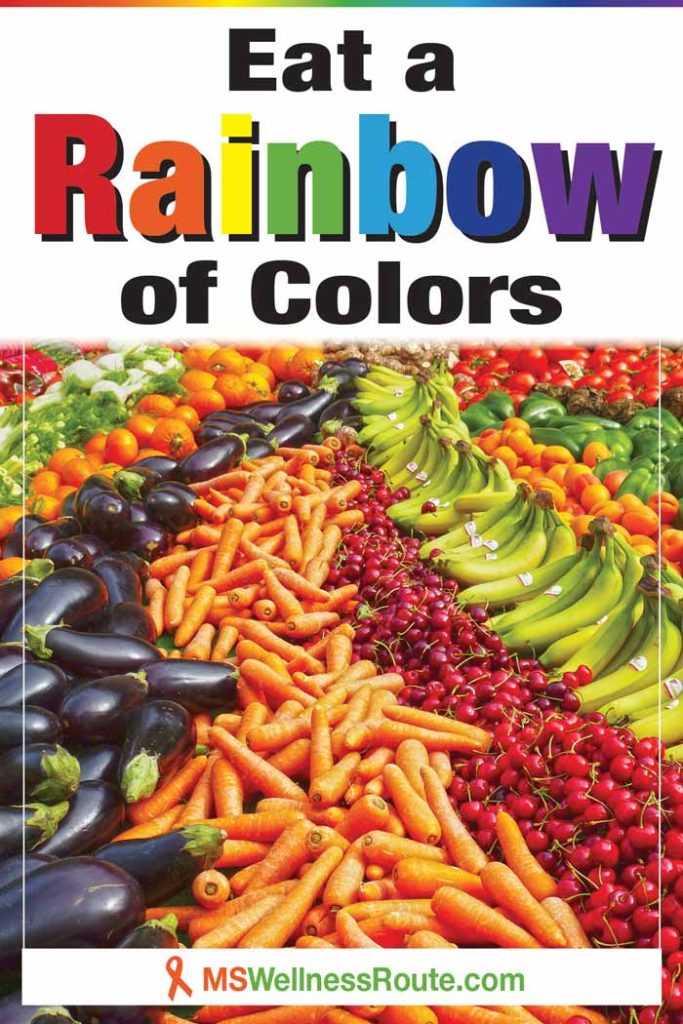
Resources:
https://pubmed.ncbi.nlm.nih.gov/25051278/
https://www.ncbi.nlm.nih.gov/pmc/articles/PMC5622683/
Eat a Rainbow of Colors





